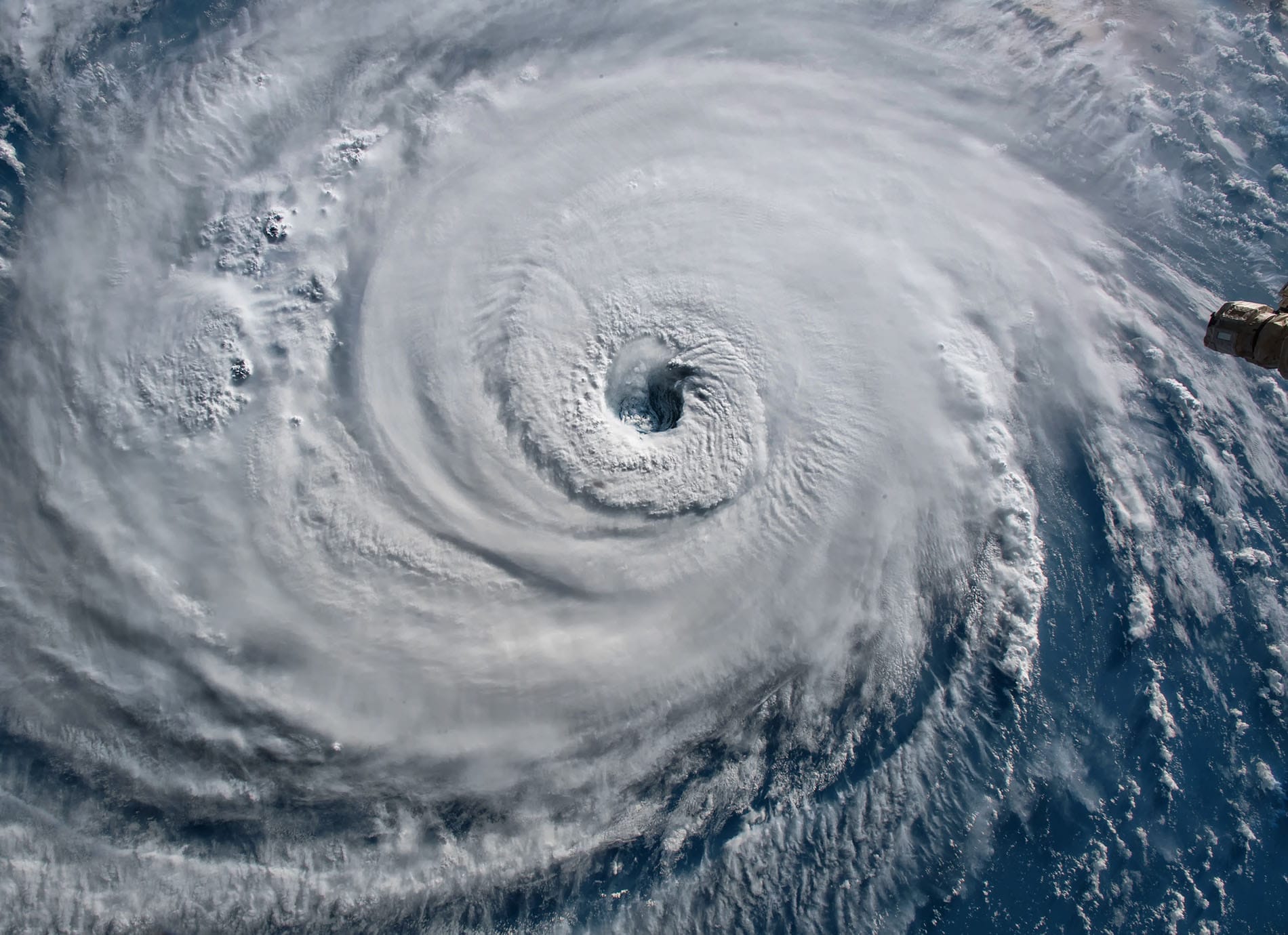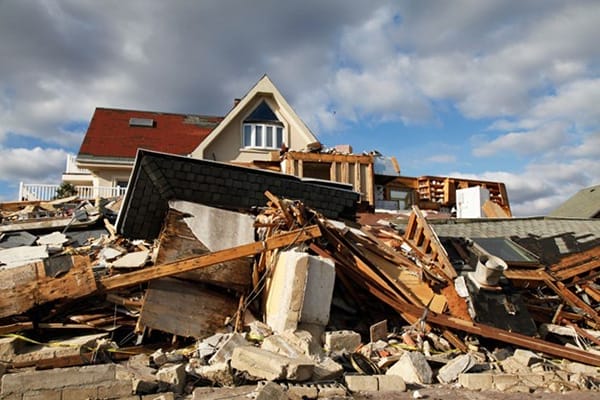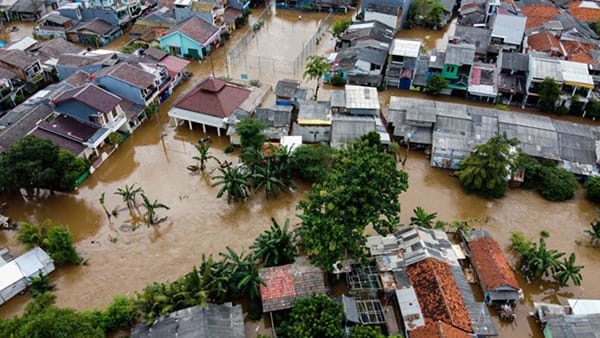While hurricanes and tropical cyclones are related and overlap a good bit, these storms are often two different weather phenomena. Understanding their differences provides insight into their behavior and potential impacts.
To get a better grasp on the difference between a hurricane and a tropical cyclone, we’ll explore the definitions of each one and discuss the factors that determine when a tropical cyclone gets classified as a hurricane. We’ll also check out the regional terminology variations in naming conventions used for hurricanes and tropical cyclones, the primary regions where these phenomena occur, and the potential impacts and risks associated with hurricanes compared to tropical cyclones.
What Is a Hurricane and How Does It Differ from a Tropical Cyclone?
The exact meteorological definition of a hurricane is a tropical cyclone with organized thunderstorms and sustained winds at or above 74 mph. A hurricane is a low-pressure system that forms over warm ocean waters, typically in the Atlantic Basin. Another key factor is its rotation, as a hurricane always rotates counterclockwise in the Northern Hemisphere and clockwise in the Southern Hemisphere.
A tropical cyclone, on the other hand, includes not only hurricanes but all warm-core, low-pressure storm systems with circular organization that develop over tropical and subtropical waters. That means weaker tropical disturbances, tropical depressions, and typhoons are also tropical cyclones. A typhoon is exactly like a hurricane, except that it forms in the Northwest Pacific Ocean instead of the Atlantic Basin.
To sum all that up, all hurricanes are tropical cyclones, but not all tropical cyclones are hurricanes.
Are “Hurricane” and “Tropical Cyclone” Used Interchangeably?
Although a hurricane is a type of tropical cyclone, you cannot use them interchangeably. The term “tropical cyclone” is far more inclusive than “hurricane,” as it covers a broader spectrum of tropical systems, including hurricanes, typhoons, tropical depressions, and tropical disturbances.
When Is a Tropical Cyclone Classified as a Hurricane?
Hurricanes start out as tropical disturbances — a cluster of thunderstorms with weak circulation — and become tropical depressions as the disturbance organizes and gains strength. As a tropical depression, the weather system has a closed circulation and maximum sustained winds of up to 38 mph.
If a tropical depression intensifies to maximum sustained wind speeds of 39 to 73 mph, it evolves into a tropical storm. When it reaches this point, the system receives an official name. Tropical storms can cause significant damage and threaten coastal areas, but they are generally not as destructive as hurricanes.
Enter your ZIP Code and compare electricity rates
When the tropical storm’s sustained winds reach or exceed 74 mph, it is officially a hurricane. The intense force of hurricanes can cause widespread devastation. High winds, massive rainfall, and storm surges combined can cause catastrophic damage to infrastructure, homes, and natural landscapes — especially in coastal areas and economically at-risk regions.
How Do Tropical Cyclones Gain the Strength to Become Hurricanes?
Now that you understand what separates a hurricane from a tropical cyclone and why the distinction is important, let’s look at how this intensification from cyclone to hurricane occurs.
Warm water is the key, as ocean waters of at least 80 degrees Fahrenheit are the fuel a tropical cyclone needs to grow and strengthen. The cyclone absorbs heat and moisture from the warm water as it moves across the ocean. This intensifies the storm’s convective activity while releasing latent heat from condensation in thunderstorms, adding more fuel to the cyclone’s development.
Another crucial developmental factor of a hurricane is a favorable atmospheric environment. Low vertical wind shear, high humidity, and a stable troposphere (the atmosphere’s lower layer) help spur the tropical cyclone’s intensification into a hurricane. The storm can maintain its structure and continue strengthening with these favorable conditions.
Not all tropical cyclones have the necessary combination of factors to become hurricanes. For example, unfavorable atmospheric conditions — such as strong wind shear or dry air — may hinder their development. However, these systems may remain tropical depressions or tropical storms, which are generally less of a threat than hurricanes.
What Are the Criteria Used to Categorize Hurricanes and Tropical Cyclones?
Wind speed is the main criterion for classifying hurricanes, and the Saffir-Simpson Hurricane Wind Scale is the primary scale used. This scale breaks hurricanes down into five categories, ranging from Category 1 (weakest) to Category 5 (strongest). Each category has a specific sustained wind speed range.
The Saffir-Simpson Scale is as follows:
- Category 1: 74 to 95 mph
- Category 2: 96 to 110 mph
- Category 3: 111 to 129 mph
- Category 4: 130 to 156 mph
- Category 5: 157 mph or higher
The criteria for categorizing hurricanes and cyclones in the US are similar in that both are categorized by sustained wind speeds. However, tropical cyclones extend into lower speed ranges and have less granular categorization in the hurricane range. The categorization system for tropical cyclones in the US is as follows:
- Tropical depression: up to 38 mph
- Tropical storm: 39 to 73 mph
- Hurricane: 74 mph or higher
- Major hurricane: 111 mph or higher
Are There Regional Variations in Terminology or Definitions for Hurricanes and Tropical Cyclones?
Tropical cyclone and hurricane classification becomes murkier as you go around the world, as some regions have their own classifications. In the Indian Ocean region, the equivalent of a Category 3 hurricane formed in the western Indian Ocean, off the east coast of Africa, would be a “very intense tropical cyclone.” The same storm that formed in the Arabian Sea or the Bay of Bengal would be a “super cyclonic storm.”
Tropical cyclones that develop in the northwestern Pacific and affect Asia are known as typhoons. A typhoon has the same basic 74-mph wind requirement as a hurricane as its basis, but various countries have their own classification systems beyond that. For example, China calls a Category 3 hurricane a “super typhoon,” while Japan labels it a “violent typhoon.” That same storm would be a “super strong typhoon” in Korea.
So, why not create a global standardized system for naming and classification? This is mostly because individual countries installed their naming and classification systems independently decades ago. With this came numerous discrepancies between the systems. However, the measuring equipment is already in place, and converting to a standardized system would mean new equipment worldwide, which the World Meteorological Organization (WMO) is likely unable to manage financially.
Where in the World Are Hurricanes and Tropical Cyclones Most Common?
Hurricanes and tropical cyclones are far more prevalent in some regions of the world because of favorable atmospheric and oceanic conditions.
Regions where hurricanes occur the most include the Atlantic Basin — the Northern Atlantic Ocean, Caribbean Sea, and Gulf of Mexico — and the Northeast Pacific Basin, which runs from Mexico to the International Date Line. The Northwest Pacific Basin, which stretches from the International Date Line to Asia and includes the South China Sea, is known for its high occurrence of typhoons. Finally, cyclones are most prevalent in the North Indian Basin — the Bay of Bengal and the Arabian Sea — and the Southwest Indian Basin, stretching from Africa to about 100 degrees east longitude.
These regions experience different names and categories of cyclonic systems but have fundamental similarities. They have warm ocean waters, typically above 80 degrees Fahrenheit, and favorable atmospheric conditions, including low wind shear and high humidity. These conditions facilitate the formation and intensification of tropical cyclones.
What Are the Potential Impacts and Risks Associated with Hurricanes Compared to Tropical Cyclones?
Hurricanes and tropical cyclones pose significant threats to coastal and inland regions. Impacts will vary with storm characteristics, but the general risks these weather phenomena pose include strong winds, heavy rainfall, storm surge, and potential tornadoes.
Because hurricanes and typhoons are generally the strongest and largest of tropical cyclones, they can generate more destructive storm surges and cause widespread coastal flooding and erosion. Intense hurricanes can also produce heavy rain, leading to flash floods and landslides. On top of all this are the sustained wind speeds of at least 74 mph, which can destroy houses, buildings, and infrastructure.
Cyclones include a broader range of intensities and sizes than hurricanes and typhoons. Tropical cyclones may have weaker wind speeds and fewer storm surges than hurricanes, but they are still a destructive force. Heavy rainfall can cause significant water damage, especially when cyclones move slowly over an area. They can also trigger flooding and landslides that can have massive consequences, especially in poorly funded areas.
The Difference Between a Hurricane and Tropical Cyclone Is Small but Important
Hurricanes and tropical cyclones are related but have key differences that separate them. While a hurricane is a specific type of tropical cyclone, the terms are not interchangeable. A tropical cyclone is any low-pressure tropical disturbance with a circular pattern, including hurricanes. However, tropical cyclones also include disturbances with sustained wind speeds of less than 74 mph, which is the minimum threshold for a hurricane. This means tropical depressions and tropical storms are also tropical cyclones.
Though they have distinct differences, tropical depressions are generally less dangerous than hurricanes. However, both require preparedness, as each can cause significant damage to people, animals, and property.
One common issue associated with hurricane season is power outages. These can stem from even the mildest hurricanes, tropical depressions, and tropical storms. Finding a great electricity provider with the latest infrastructure can help mitigate this issue. Check out the electricity providers on Energy Savings to find one that works for you.
Brought to you by energysavings.com
All images licensed from Adobe Stock.




